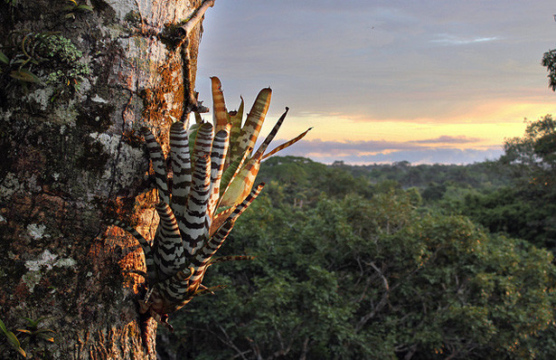Bolivia & the Global Fight Against Climate Change
In the past year, the Bolivian government has emerged as an outspoken critic of climate change policies.
Deforestation rates in the Amazon River Basin have risen to near-record levels in recent years, threatening biodiversity and indigenous lands as well as global climate change efforts and weather patterns in the Amazon region and beyond. While the main contributors to deforestation vary among countries, the lack of governance across Amazonian nations is a primary factor behind countries’ failure to stem forest loss, said experts at an event launching a new Inter-American Dialogue report on May 29.
Thomas Lovejoy, an environmental science and policy professor at George Mason University, explained that the Amazon rainforest must be thought of as a system, and the sum of many small, seemingly inconsequential economic activities have a large aggregate effect on it. Climate change and fires (which deforestation itself exacerbates) are accelerating forest loss and pushing the rainforest to a tipping point—a degree of deforestation at which the forest can no longer generate its own rainfall by recycling moisture and thus begins to transform into other, drier ecosystems.
[caption id="attachment_83732" align="alignleft" width="360"] Kristina McNeff[/caption]
Kristina McNeff[/caption]
Many of these economic activities stem from infrastructure programs meant to promote development. Kristina McNeff, program officer at the Gordon and Betty Moore Foundation's Andes Amazon Initiative, noted that 95% of deforestation in the Amazon happens within 5 kilometers of a road or waterway. McNeff says that it is not the projects themselves that cause large scale deforestation but rather the opening of areas that are fragile from a rule of law and governance perspective. Thus, future policies must involve greater local accountability to ensure economic development is sustainable.
[caption id="attachment_83735" align="alignright" width="360"]
 Rodrigo Botero[/caption]
Rodrigo Botero[/caption]
In Colombia, Rodrigo Botero, director of the Fundación para la Conservación y el Desarrollo Sostenible, explained that deforested areas overlap overwhelmingly with areas controlled by criminal groups. Following the peace agreement with the FARC, the Colombian government has been unable to impose rule of law on formerly rebel-held territories and they have become safe havens for illicit activities such as gold mining. Among the solutions Botero proposes are strengthening law enforcement, beginning a titling process for the nation’s vast tracts of untitled land, and promoting alternative livelihoods in line with sustainable development.
[caption id="attachment_83738" align="alignleft" width="360"] Enrique Ortiz[/caption]
Enrique Ortiz[/caption]
Though the current scenario confronting the Amazon seems bleak, there are reasons for optimism. Over 40% of the Amazon is already protected through legal frameworks, indicated Enrique Ortiz, program director at the Andres Amazon Fund. Lands that are protected experience a far lower rate of deforestation than those that are not. He advocates for a shift in focus to “avoided reforestation”—international agreements are focusing on restoration, but it is more important to protect existing forests.
The task of curbing deforestation in the Amazon is monumental and urgent. To achieve it, the governments of the Amazon Basin must collaborate to create a shared vision for protecting forest. With an increased focus on governance and sustainable development, along with a coordinated plan among governments, the tipping point can still be avoided, and the damage to one of our planet’s most precious ecosystems eventually undone.
[embed]https://youtu.be/ifXOqDaK4kE?t=324[/embed]
In the past year, the Bolivian government has emerged as an outspoken critic of climate change policies.
As global temperatures continue to rise with the global community stalled on any way to stop them, countries must prepare to adapt to increasingly volatile environmental conditions.
Ecuador may well play a decisive role in the outcome of the global tension between economic development and environmental conservation.
 Thomas Lovejoy. Photo credit: Sofia Lalinde / Inter-American Dialogue
Thomas Lovejoy. Photo credit: Sofia Lalinde / Inter-American Dialogue
